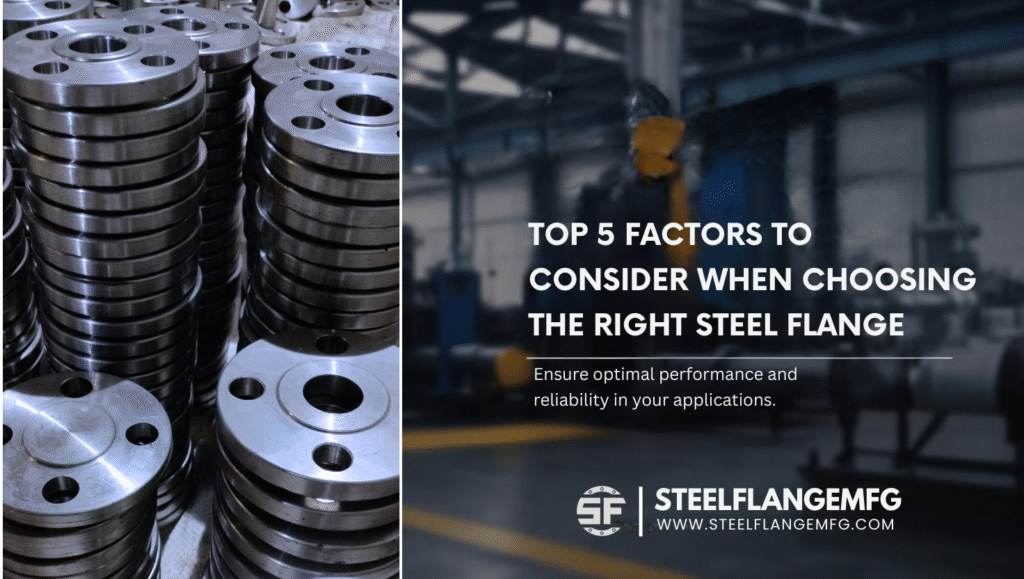Innovations in Steel Flange Manufacturing: Enhancing Durability and Performance
Steel flanges are critical components in piping systems, ensuring secure connections across a wide range of industrial sectors — from oil and gas to petrochemicals, water treatment, and power generation. As industries evolve and demand higher standards of quality and safety, the manufacturing of steel flanges has also seen significant innovations. These advancements enhance durability, improve performance, and reduce maintenance costs.
In this blog, we explore the latest trends and technological developments in steel flange manufacturing that are transforming the way industries operate.

1. Advanced Materials for Longer Life
Traditional flanges are often made from carbon steel or stainless steel. However, innovation in metallurgy has introduced newer, more durable materials such as:
- Duplex and Super Duplex Stainless Steel: Excellent strength and resistance to corrosion.
- Nickel Alloys: Ideal for high-temperature and high-pressure applications.
- Titanium and Inconel: Perfect for corrosive environments like chemical plants and marine systems.
These new materials significantly extend the lifecycle of flanges, reducing the frequency of replacements and increasing overall system reliability.
2. CNC Precision Machining
Modern flange manufacturing heavily relies on Computer Numerical Control (CNC) machining. This technology allows manufacturers to:
- Achieve precise tolerances down to microns.
- Ensure perfect flatness and alignment, reducing the chances of leakage.
- Produce custom flanges faster for project-specific needs.
CNC machines enable mass production without compromising on accuracy, leading to higher product quality and consistency.
3. Enhanced Surface Treatment Techniques
Corrosion is one of the primary causes of flange failure. To counter this, manufacturers are now applying:
- Electropolishing for a smoother, corrosion-resistant surface.
- Hot-dip galvanizing creates a zinc layer for better rust protection.
- Powder coatings or PTFE coatings for chemical and abrasion resistance.
These treatments enhance durability, especially in outdoor and offshore environments where exposure to moisture and chemicals is unavoidable.
4. 3D Printing and Rapid Prototyping
The rise of additive manufacturing (3D printing) has started to influence the steel flange industry, particularly in:
- Rapid prototyping of custom designs.
- Tooling components and test fixtures.
- Small-batch production of complex or non-standard flange shapes.
While not yet widely adopted for mass production, 3D printing provides agility and innovation in early design stages.
5. Automation and Smart Manufacturing
Smart factories are now integrating automation, robotics, and Industrial Internet of Things (IIoT) to monitor and control the flange manufacturing process. These technologies help:
- Detect defects in real-time using AI-powered quality checks.
- Optimize production schedules for faster turnaround.
- Improve safety and reduce human error in high-risk machining operations.
6. Sustainability in Manufacturing
Eco-friendly practices are being integrated into steel flange production by:
- Using energy-efficient machines.
- Recycling scrap metal and reducing waste.
- Opting for green coatings that reduce environmental impact.
Such practices benefit the environment and boost the manufacturer’s brand image and regulatory compliance.
Conclusion
Innovation in steel flange manufacturing is paving the way for stronger, safer, and more reliable industrial systems. From high-performance materials to smart machining and automation, these advancements ensure flanges are ready to meet the evolving demands of modern industries.
If you are seeking cutting-edge flange solutions for your project, make sure to choose a manufacturer who embraces these innovations, ensuring superior quality, performance, and longevity.
